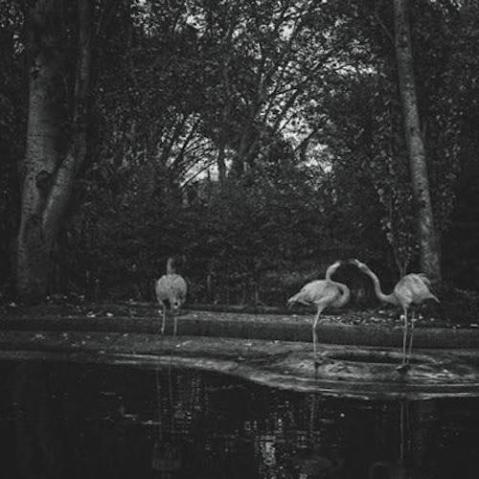Learning how to read an image
Being able to read an image—in a similar fashion to the way one would read a book, deconstructing it, examining its component parts—is an invaluable skill. It allows us to take each and every part of an image and look at it in depth in a more critical and meaningful way. Instead of looking at pictures and simply liking or disliking them, looking deeper into an image will highlight the reasons why we are drawn to or repulsed by something. This is incredibly important in order to not only understand imagery better in general, but also understand our own pictures in a more personal and critical way.

The color red has long been a favorite of mine to photograph. This picture was inspired by the symbolism of the color; I created the image around the concept of red as the color of life, female fertility, and sexuality.
Images are made up of many different components. Just as a teacher would ask us to read a book critically and dissect it, breaking it down into components such as character, setting, period, plot, symbolism and so on, so we can dissect a photograph. If we were to be literal about breaking down a book into its basic components we could break it down into chapters, point of view, or the style in which the text was written. Images are no different; we can break a picture down into character, setting, time, concept, symbolism, or we can also look at the image technically and create categories such as camera angle, lens choice, poses, and so on.
In doing so, we are examining each individual part that makes up the whole, which is the best way to understand how the whole works. If we want to understand how a toaster works, the best method would be to take it apart to see how it was built.
The same is true for image-making. The better we understand the how and why, the more meaning the image holds. Sharpen your critical skills by learning how to read images and it will pay off in your own work.
In being able to read an image critically you will also have the ability to create dozens of different exercises and creative challenges for yourself. From choosing a color to act as your inspiration to recreating the classic light in a painting, there are endless ways to learn. I’m personally interested in the storytelling elements of an image because I believe that storytelling is key to image-making. Whether the story is obvious or not is a non-issue; it is about understanding the artist’s intent.
In learning to break down images into their basic parts, you are teaching yourself both how to create, and to recognize why you create. After you’ve looked at the work of others, look back at your own images. Ask yourself why you chose that color to be featured, or better yet, ask yourself honestly if you thought about it at the time. The way a viewer looks at an image is very influenced by the color a picture presents, or by the wardrobe chosen, so you owe it to your art to make conscious decisions about the elements you use in your compositions.
Practical pointers: the perfect image
If you could shoot anything, what would the picture look like? answer these questions to figure out what your perfect picture would be:
- What color do you want to photograph?
- What costume do you want the subject to wear?
- What landscape or space do you want to shoot?
- Is there a prop that excites you to photograph?
Inspiration is not a far-flung concept, out of reach to all but a few great artists, and nor is it a matter of chance; as a photographer it’s possible to train your mind to see the creative possibilities in any situation. Featuring the pioneering work of author Brooke Shaden and a selection of carefully chosen contributing photographers, Inspiration in Photography book provides the perfect balance of insight and instruction to help you find inspiration whenever you need it and capitalise on it every time.
[one_whole boxed=”true”]
 Inspiration in Photography by Brooke Shaden.
Inspiration in Photography by Brooke Shaden.
£7.99, Download the PDF now!
This PDF version retains the styling of the original print book.
RRP for print edition: £17.99
[button color=”Accent-Color” size=”small” url=”https://www.ilexinstant.com/product/inspiration-in-photography/” text=”Digital Edition”]
[button color=”Accent-Color” size=”small” url=”http://www.amazon.co.uk/gp/product/1781579938/ref=as_li_qf_sp_asin_tl?ie=UTF8&camp=1634&creative=6738&creativeASIN=1781579938&linkCode=as2&tag=ilexpresscom-21″ text=”Amazon UK (Print)”]
[button color=”Accent-Color” size=”small” url=”http://www.amazon.com/gp/product/0415831377/ref=as_li_qf_sp_asin_tl?ie=UTF8&camp=1789&creative=9325&creativeASIN=0415831377&linkCode=as2&tag=ilexinst-20″ text=”Amazon USA (Print)”]
[/one_whole]







